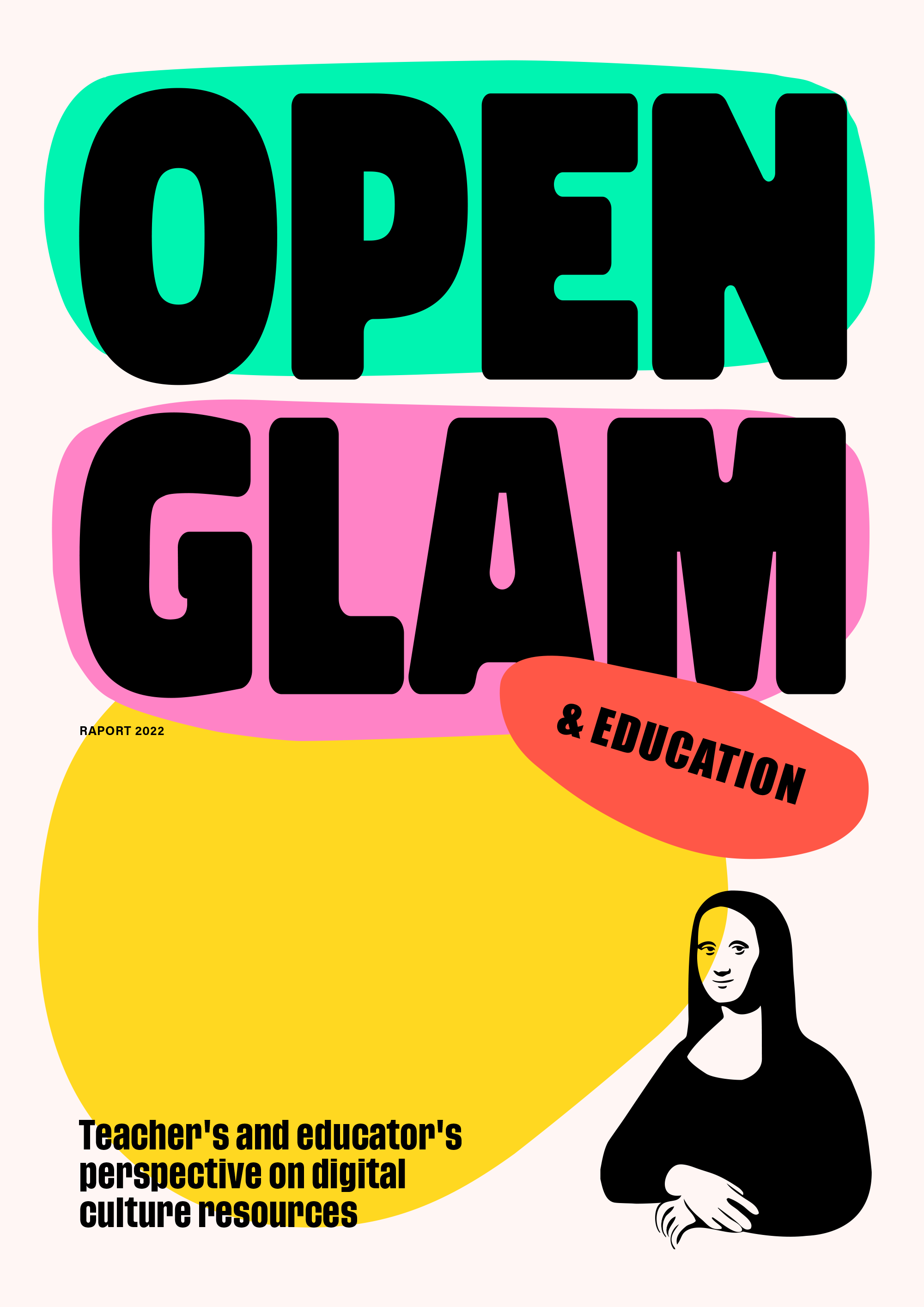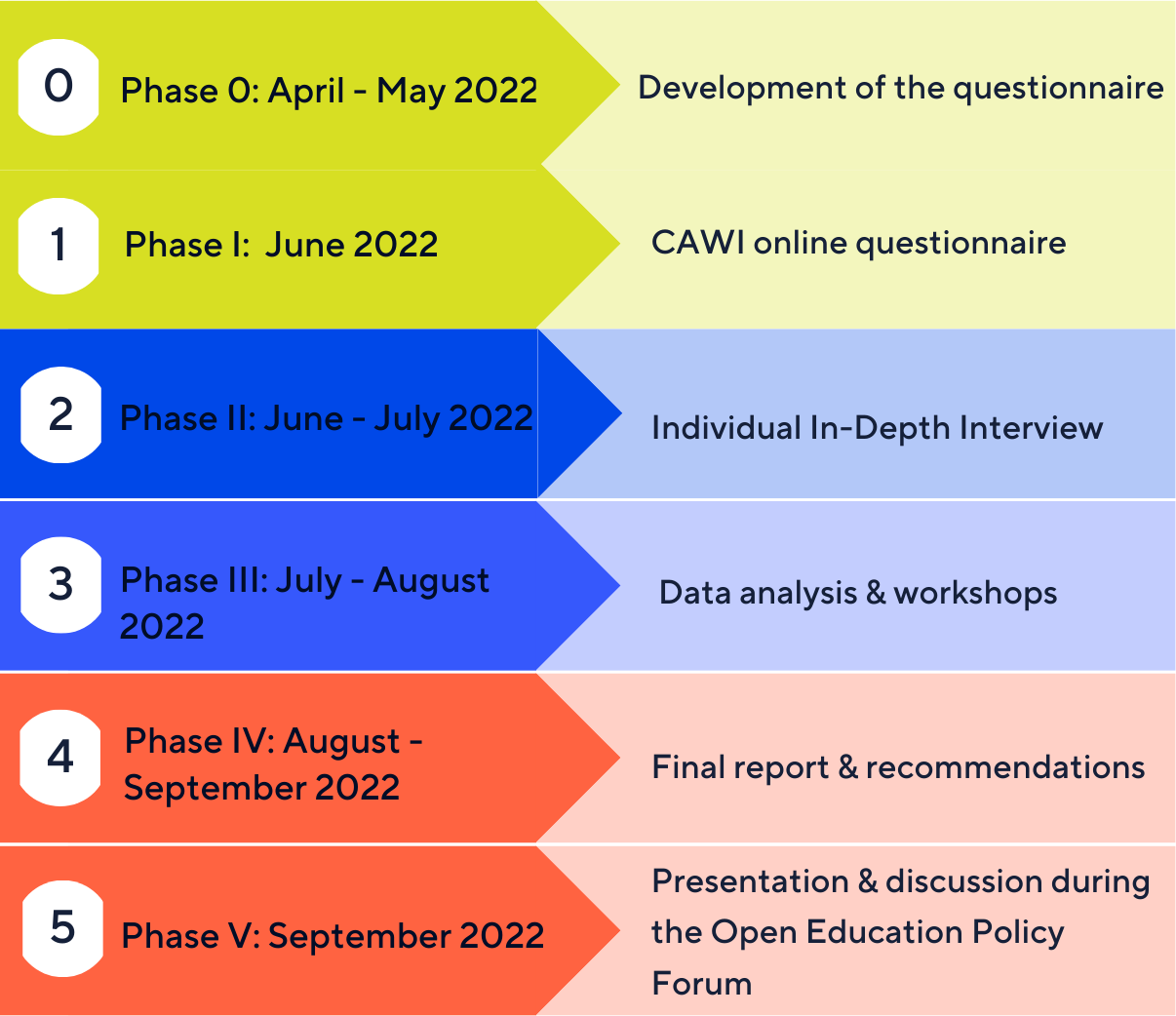Study: Open GLAM & education. Teacher’s and educator’s perspective on digital culture resources

Please find final report from the study and evidence-based recommendations here: https://centrumcyfrowe.pl/en/open-glam-2022/
You can also watch the official presentation of the research results and discussion panel here: https://www.youtube.com/watch?v=kpoU52KCi4k
The study focuses on the use of educational digital resources (e.g. lesson plans, learning scenarios, tutorials), educational interactive materials (e.g. games, quizzes, virtual tours) and online, digitised collections (e.g. image, video, sound) developed by cultural heritage institutions such as galleries, libraries, archives and museums (GLAM).
The study is conducted by Centrum Cyfrowe in partnership with Europeana and EuroClio and aimed at:
- understanding the status quo in use of GLAM’s educational interactive materials & resources for educational purposes
- supporting the development of new high quality, relevant f GLAM educational interactive materials & resources
- promoting them among teachers and non-formal educators
The project is planned for 6 month, starting in April 2022 and ending in September 2022.
The deadline for filling in the questionnaire is July 10.
The collected data will create a base for a research report that will be openly available in the fall of 2022.
The pan-European study will be conducted only in English.

Take part in the study
We invite you to take part in a study and fill up a short questionnaire. This will not take more than 10 minutes.
We want to assure you that your responses to this survey are completely anonymous and your personal data will not be collected.
[click here to fill up a questionnaire]
Research context
The global pandemic of COVID-19 has radically changed the way we learn and teach. Due to the restrictions, almost 90% of all countries worldwide have offered online learning. It was the one of the biggest disruptions in education in history and no country was prepared to face this challenge.
Educators have turned towards digital resources. According to a recent European study conducted by Centrum Cyfrowe in 2021, as much as 38% of teachers used web pages and educational resources created by GLAM institutions such as libraries, art galleries, museums for the purpose of online education.
At the same time more and more digital cultural heritage collections are made open and available for educational reuse. How exactly are they being used? What are the main opportunities and challenges linked to having more GLAM content and GLAM content-based educational interactive materials & resources used for educational purposes? How to make sure these are fit for the purpose of teachers & educators?
We think that there is a great need to further study the subject of the usage of GLAM educational interactive materials & resources in order to support the development of high quality relevant resources as well as to promote them among teachers & educators. This pan-European research will provide us with information about teachers‚Äô and educators’ motivation, ways of use and barriers regarding the usage of GLAM‚Äôs educational interactive materials & resources.
Methodology
Taking the principle of triangulation of research methods into account, the research will combine qualitative research (Individual In-Depth Interview) and quantitative research (Computer-Assisted Web Interview – online questionnaire).
The research project will focus on studying teachers‚Äô and educators’ motivation, ways of use and barriers regarding the usage of digital educational interactive materials & resources developed by GLAM institutions.
- By GLAM educational interactive materials we understand online digital tools developed by GLAM institutions (e.g. games, quizzes, virtual tours) useful for different educational purposes.
- By GLAM educational resources we understand online instructional materials developed by GLAM institutions (e.g. lesson plans, learning scenarios, tutorials) useful for different educational purposes.By GLAM online, digitised collections we understand digitised collection & context information (e.g. image, video, sound) developed by institutions and available online.
Goals & research questions
The main outcome of the research will be a set of recommendation which will include:
- recommendations on how to develop high quality, relevant GLAM educational interactive materials & resources based on teacher’ and educators’ actual needs
- recommendations on how to lower typical barriers recognized by teachers and educators regarding the usage of GLAM educational interactive materials & resources
- arguments in favour of development of GLAM educational interactive materials & resources as a part of every digitization process in GLAM institutions
- recommendations on how to reach out and cooperate with teachers & educators in the process of developing GLAM educational interactive materials & resources.
Main research questions will include:
- What are the typical use cases of GLAM educational interactive materials & resources usage?
- What are the main goals of the GLAM educational interactive materials & resources usage?
- Why do teachers & educators decide to use GLAM educational interactive materials & resources?
- From what sources do they learn about the existence of GLAM educational interactive materials & resources?
- What are the main barriers of usage?
- What type of educational GLAM educational interactive materials & resources do they use most frequently and why? What are their favourite materials?
- What features do ideal GLAM educational interactive materials & resources (with special focus on openness and accessibility)?
- Are GLAM educational interactive materials & resources useful for formal education (to what extent they help in implementing the curriculum or educational programs)?
- What are the typical subjects they use the GLAM educational interactive materials & resources for (eg. art, maths, creative thinking, history, coding ect.)
- What was the impact of remote education forced by COVID-19 pandemic of the level and frequency of the usage of GLAM educational interactive materials & resources? How the frequency of the usage could change after the pandemic?
All materials from the study including methodology and research tools, report, charts and diagrams in .png version and spreadsheets with collected data will be published on a website as well as a pdf format and made available under CC BY Licence ‚Äď so everyone can copy, modify, distribute, communicate and make the publication available to the public, even for commercial purposes, all without asking permission.
Timeframe

Contact information
Magdalena Biernat [Centrum Cyfrowe board member, head of research]:  mbiernat@centrumcyfrowe.pl
Anahita Rezaei [project coordinator]: , arezaei@centrumcyfrowe.pl
„Girl reading”, Tony Robert-Fleury, Public Domain, source: Wikimedia Commons